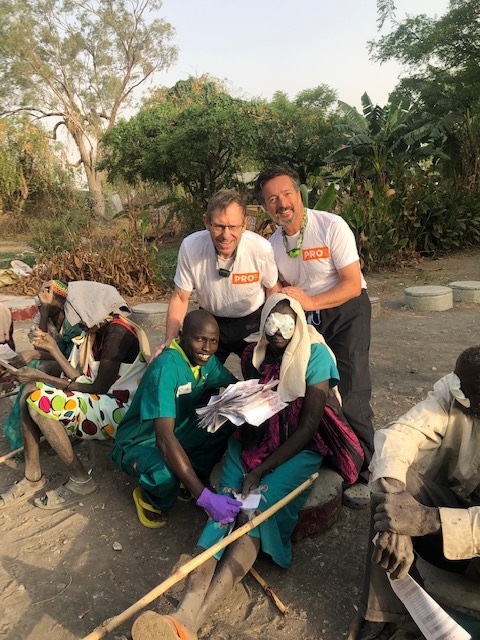
Since 2013, South Sudan has been a country splintered by conflict—struggling to meet the most basic health care needs of its population.
In February, John A. Moran Eye Center Global Outreach Division Senior Medical Director Alan S. Crandall, MD, again answered a call to provide desperately needed cataract surgeries in the African nation.
While Crandall and his Moran Eye Center team of volunteer physicians and medical personnel have a long history of conducting surgical eye care camps and training ophthalmologists in 11 African nations, Crandall had not been able to safely return to South Sudan since Moran’s second surgical eye camp at the Duk Lost Boys Clinic in 2012. The violence of civil war thwarted a return trip planned for 2014, and South Sudan has remained on the list of the world’s most dangerous countries.
But when Jill Seamans, an American physician with the nonprofit South Sudan Medical Relief Project, reached out to long-time Moran partner, the Himalayan Cataract Project, asking for support for a cataract surgical campaign, wheels were set in motion for a joint effort.
A Refuge for Treatment
After months of planning, Crandall and a team of two other ophthalmologists, six nurses, and two ophthalmic assistants from the U.S. and Ethiopia made the trip to the northern village of Old Fangak—almost 300 miles north of Juba.
Doctors Without Borders has built a clinic in Old Fangak, and the area has become a refuge for large numbers of displaced people fleeing conflict in other parts of the country. Many of the cataract patients walked for miles and days to reach February’s eye care clinic, sometimes holding onto sticks and being led by family members.
Crandall downplays the extreme difficulty of reaching Old Fangak safely, sleeping in tents on the dirt, navigating snakes and insects, and operating in a rudimentary clinic.
"It was like any other surgical mission to Africa," said Crandall. "I love that area, and I can’t think of a trip I don’t like going on."
Only One Ophthalmologist for Millions
In South Sudan and throughout Africa, blindness from cataracts is rampant. Although it is curable with a simple surgery, the country has just one ophthalmologist for almost 12 million people.
Crandall was able to restore sight to about 90 people. Among his patients, one teenage girl stood out.
"This girl had lost vision in one eye and had a partially resorbed cataract in the other," explained Crandall. "It’s a rare occurrence and a challenging surgery, but I was able to remove the cataract and implant a clear lens. She was one of the victories. Dr. Seamans said she had never seen that girl smile. Finally, there was hope in her and in her family."
Global Mission to Expand Sustainable Eye Care
Crandall worked with the team for three days before leaving to join the Moran outreach team on their latest missions to Dodoma and Mwanza in Tanzania—far safer areas but also plagued with curable blindness and lack of trained ophthalmologists.
Learn more about how Moran is working to expand sustainable eye care in developing nations by teaching and training more doctors here.